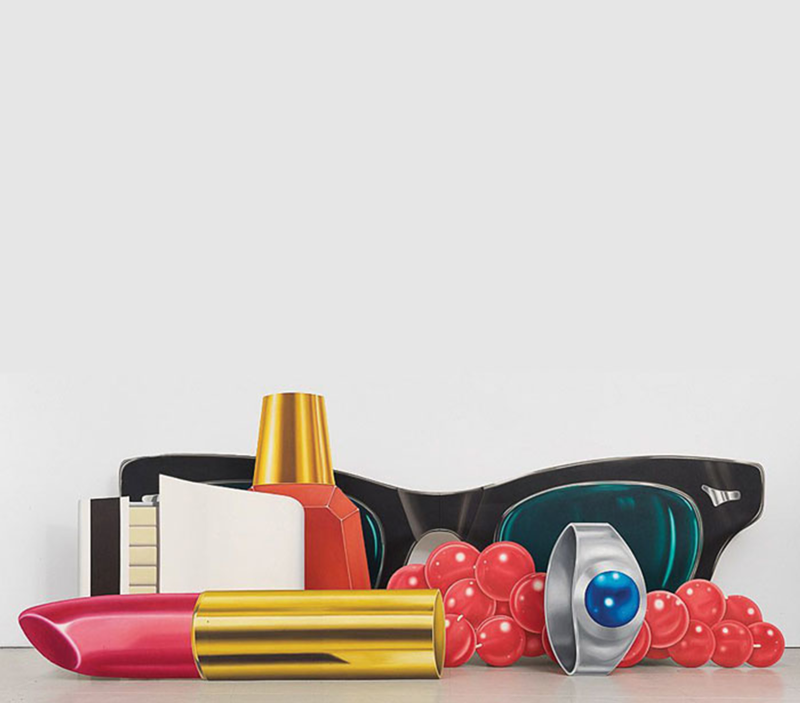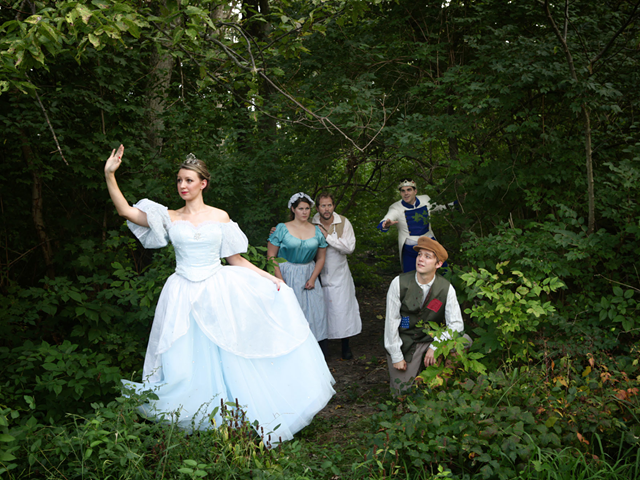
A
s the long-awaited Beyond Pop Art: A Tom Wesselmann Retrospective prepares to open Friday at Cincinnati Art Museum, there is much to discuss about this native son’s controversial career as one of the original Pop artists.
But the first thing to say is, “Wow!” That was my response upon seeing what may be the show’s signature work, “Still Life No. 60,” from 1973.
I already knew this work was big — almost 30 feet long and 10 feet high — and somewhat epic in its painted depiction of objects likely to be found on a woman’s bedside table (lipstick, sunglasses, matches, nail polish, a ring and more). It’s been reproduced as one of ArtWorks’ Cincinnati Masters murals; it’s downtown at Eighth and Main streets and will be dedicated Wednesday.
But the original isn’t just the monumental painting I was expecting — although Wesselmann considered it a painting. It is a sculptural installation, an intricate set design. It’s a veritable landscape of these giganticized and spectacularized colorful objects.
The work is a “shaped canvas” in six sections, five of them freestanding. It’s a tour-de-force visit to the land of everyday consumer objects — the great obsession of Pop artists. Wesselmann had earlier worked with smaller shaped canvases, but nothing like this.
“If it can be one shaped canvas, why can’t there be many shaped canvases [in a work]?” asks Jeffrey Sturges, the Wesselmann Estate representative supervising the installation of this exhibit. “So this is a whole still-life arrangement. This is the largest thing he ever did.”
Sturges also relates it to Wesselmann’s earlier work adding collaged elements to his paintings. “Instead of it being pieces of paper, here you have these shaped canvases layered in space,” he says. “It’s a painting in many parts.”
Beyond Pop Art has so far traveled to Montreal and Richmond, Va., where it was organized by the Montreal Museum of Fine Arts with the estate’s assistance, then Denver and now here, where the Cincinnati Art Museum has organized it. It contains about 75 objects total, from major works like “Still Life No. 60” to sketches and correspondence. This is the most important painting show the museum has had in years, for its scope and its artist’s reputation, as well as for the way the artist fought to stretch the definition of painting. (The exhibit will be up through Jan. 18, 2015.)
Wesselmann made a big impact when he first showed his Great American Nude paintings/collages at New York’s Tanager Gallery in 1961. He was the first of the Pop artists to have a solo show, and collectors and critics instantly recognized he was doing something new and important. These were paintings, yes, but the actual nudes were closer to jazzy, colorfully decorative drawings (often erotic ones) than fully fleshed-out, realistically depicted women.
They were beautiful, but so too were his paintings’ images of objects collaged from billboard advertising and magazines. And as he soon began creating his Still Life series, actual objects sometimes began to appear, too, in his paintings. A favorite in this show is bound to be the large, four-panel “Still Life No. 35” from 1963, with a collaged six-pack of Royal Crown Cola, open loaf of bread, Pan American Airline plane and Parisian cityscape.
“He saw no difference in him using a Coke bottle or a Brillo Pad image in a painting than Picasso would have thought of using bottle of wine in his,” Sturges says. “This was his life, his everyday.”
He had a busy career and regular shows right up until he died in 2004, restlessly but resolutely shifting in subject matter and mediums, including painting on cut-out aluminum and an exploration of pure abstraction. But his reputation — his fame in the greater culture — did not hold up the way, say, those of Andy Warhol, Claes Oldenburg, Roy Lichtenstein or Cincinnati native Jim Dine have.
While alive, he had no major U.S. museum retrospective (although there was one in Europe and Japan). With the rise of feminism in the 1970s, his Nudes work was criticized for objectifying women. So this show is out to reestablish his reputation among art devotees and introduce him to those who may not know the name.
“What I see as a strength of his work, the inventiveness and the constant changing, can be a detriment in terms of being famous,” Sturges says. “Not everybody wants to follow along the whole way.”
The criticism of sexism confused Wesselmann when it arose in the 1970s, Sturges says. “He gets criticized for no eyes and no nose [on some of his Great American Nudes], but his explanation is those details take away from the picture he’s making,” he says. “Matisse has a whole series of faceless nudes that he’s done. This is Tom’s presentation in the 1960s. If you look back at his work [during] the 1970s, maybe you’re not so happy about that.”
Jessica Flores, the art museum’s former contemporary art associate curator, thought about this topic when the Wesselmann show was being planned. “The common knee-jerk reaction is that Wesselmann’s depictions of women are sexist, which is a terribly uninteresting statement,” she says via email. “Far more exciting would be a discussion of his use of art genres to comment on gender, or what his ‘sexist’ images say about masculinity for his generation.”
Wesselmann was born in Cincinnati in 1931, and transferred to University of Cincinnati from Hiram College to study psychology, but was interrupted by the military draft in 1952. He became interested in cartooning while in the army and, after returning to UC and graduating in 1954, entered the Art Academy of Cincinnati. Using the GI Bill, he enrolled at Manhattan’s Cooper Union in 1956 and became exposed to the world of Contemporary fine art.
Abstract Expressionists like Willem de Kooning and Robert Motherwell were a key influence, but not in the expected way. “In the beginning when Tom is going to make work and thinking about things he loves, he thinks of de Kooning,” Sturges says. “His work is big, so he’ll work small. It’s abstract so he’ll work figurative. It’s messy, so he’s going to work neat. He’s trying to define himself by negating what he loves.”
He was trying — and succeeding — to be a Great American Original of his time. ©
BEYOND POP ART: A TOM WESSELMANN RETROSPECTIVE opens Friday at the Cincinnati Art Museum with an Art After Dark Pop art-inspired Halloween party 5-9 p.m. More info: cincinnatiartmuseum.org.





